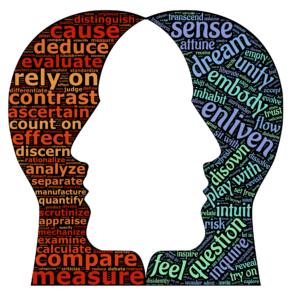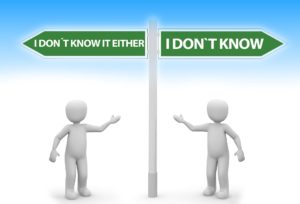
Ontological Series: Part 2
Jim Collins, in his famous book Good to Great says: “Greatness is not a function of a circumstance. It is largely a matter of conscious choice and discipline.” The self-awareness to distinguish between your own assertions and assessments–and create alignment between belief and behavior–is key to leadership.
Today we’ll talk about the difference between the two and why it matters so darn much. Let’s start with a couple definitions.
Here’s how this comparison plays out in a leadership role.
Assertion: Mr. Smith missed three meetings in March.
Assessment: Mr. Smith is unreliable.
Assertion: Miss Anderson missed three meetings in March.
Assessment: Miss Anderson is reliable.
The assertions are both true. Easy-peasy. But the assessments are based on the assessor’s standards of unreliability. Miss Anderson was on vacation. Mr. Smith was absent without explanation.
Here’s what to watch out for when assessing and asserting.
 Don’t Borrow Others Assessments
Don’t Borrow Others Assessments
This is a challenge, no doubt about it. Let’s say a colleague tells you the new VP’s got attitude. That’s an assessment based on your colleague’s standards. You haven’t met the new VP, but the word “attitude” comes up in your head now. Be careful. When you don’t bother to think for yourself, you’re being lazy. It takes conscious effort–but it’s worth it–to remember your colleague’s opinion is not your opinion.
 Be Aware of Your Mood
Be Aware of Your Mood
Assessments are dramatically influenced by mood and emotion. This is why timing is so important. Your assessment of anyone an hour after you got a flat tire in the rain will be far worse than it would be on a day without crisis. And sometimes it’s worth it to reschedule a meeting for this very reason.
 Stop with the Characterizations
Stop with the Characterizations
People are listening. When you make a sweeping assessment. When you exaggerate. When you label others. By saying: “Julie is the best at facilitating a meeting,” you’re making an assessment, which simultaneously lifts Julie up and shuts others down. They think: Why try when Julie is the best? Another approach, would be: “Julie facilitated well. I like how she left pauses between conversations and ensured everyone was heard.” By describing the specific style, rather than a dualistic either/or judgment, you offer an opportunity for others to learn and grow.
 Decide Whose Assessments Matter
Decide Whose Assessments Matter
Now consider yourself as the assessee. If you want to know something about yourself, ask a colleague and beg them to tell you the truth. The truth can hurt. And that’s when you’ll see that most feedback tends to offer assessments rather than assertions. It’s then your job to decide if their truth is your truth. If their standards are your standards. Remember: we tend to assess others based on their behavior and we assess ourselves based on our beliefs.
As humans it’s perfectly natural to assess. In fact we are assessment-making machines! The trick is staying self-aware and knowing what to do with them.

